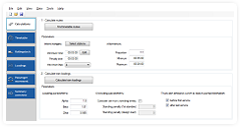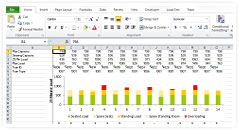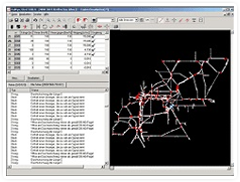TRAIN LOAD PREDICTOR™

OVERVIEW
Train Load Predictor™ measures the impact of a rail service plan on the passenger experience. It predicts critical passenger information about a future timetable to assist railway planners such as loadings by trains, service interval by station, fleet utilisation over the day. Train Load Predictor™ helps planners make the right planning decisions by accurately answering critical planning questions such as:
- How will passengers be impacted by the changes in the timetable? Who will be the “winners” and “losers”?
- If I implemented the proposed timetable would some trains be overloaded? If yes, which trains?
- What is the average time a passenger will need to spend travelling, to spend standing or wait for a train with the proposed timetable?
- Have I maintained an adequate level of service at each stations throughout the day?
- Can I provide the equivalent customer service levels with less rollingstock and infrastructure?

EASY TO USE
Train Load Predictor™ has an easy to use interface and is designed in a simple tab format to lead users through the workflow. It comes with a user guide and requires minimal training.

FLEXIBLE OUTPUTS
Data and output from Train Load Predictor™ integrate seamlessly with standard office applications. Moving data or graphical outputs from Train Load Predictor™ is as simple as 'copy and paste', and a range of advanced export functions are provided to easily transfer large amount of data to MS Excel for further manipulation, analysis or reporting.

INTEGRATED WITH INDUSTRY STANDARD SOFTWARE
Train Load Predictor™ is designed to import timetable data directly from industry standard timetable software such as RailSys(SIMU++) or Railtable. During service plan development, it provides a seamless flow between different rail planing applications to ensure key data outputs are available throughout the planning process. It also enables managers and strategic planners to quickly review timetables without the need to switch to complex timetabling software.
